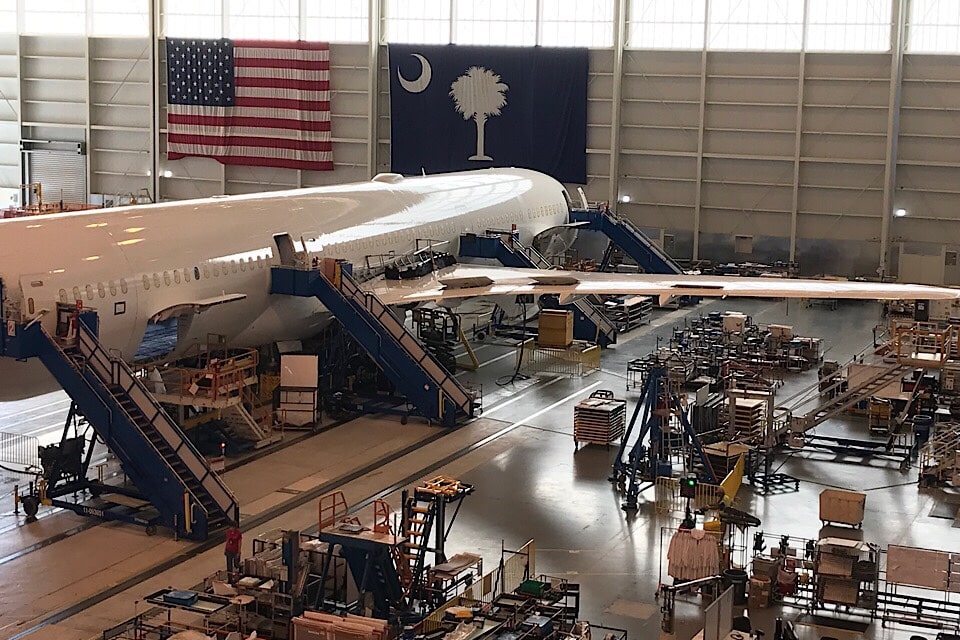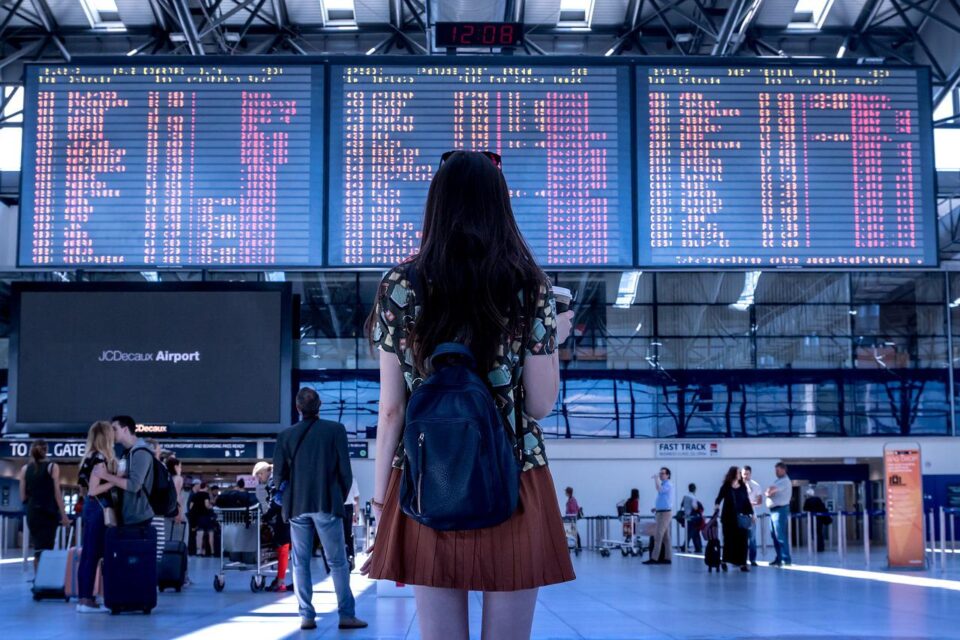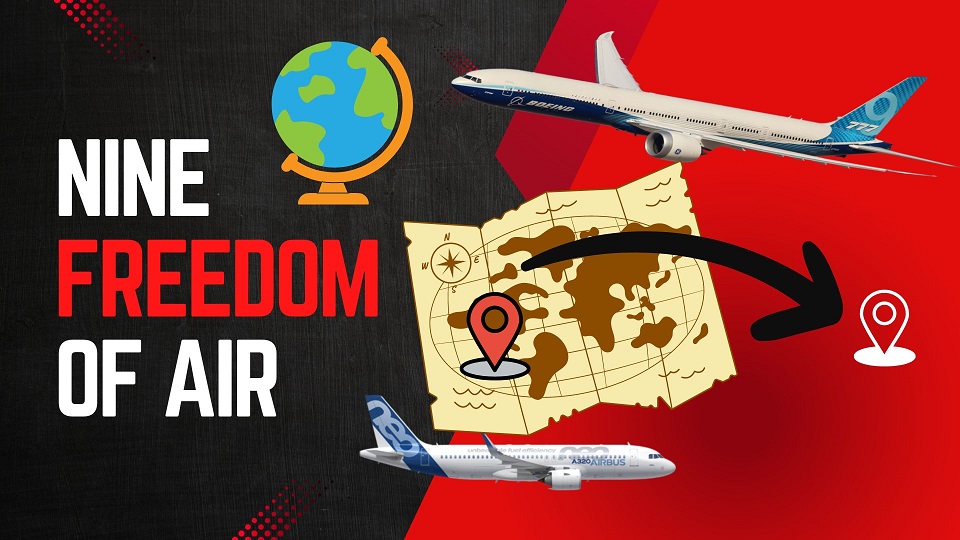Aviation
New York Times story paints an inaccurate picture of Boeing South Carolina

This message from Brad Zaback, Vice President and general manager of the 787 Program, was sent to all Boeing South Carolina teammates Saturday, April 20.
Team,
The 787 program has a lot to be proud of these days. Our transition to Rate 14 continues to be the most seamless rate transition in the program’s history, and our Boeing South Carolina 787 manufacturing operations are the healthiest they’ve ever been. More importantly, our quality metrics show that we are performing at all-time high levels as well. That is a testament to each of you, demonstrating your pride and your ongoing commitment to excellence with respect to both safety and quality.
A story that posted in today’s New York Times, however, paints a skewed and inaccurate picture of the program and of our team here at Boeing South Carolina. This article features distorted information, rehashing old stories and rumors that have long ago been put to rest.
I want all BSC teammates to know that we invited the New York Times to visit Boeing South Carolina once they contacted us, so that they could see first-hand the great work that is done here. They declined this invitation.
The allegations of poor quality are especially offensive to me because I know the pride in workmanship that each of you pours into your work every day. I see the highest quality airplanes – airplanes that meet rigorous quality inspections and FAA standards – deliver on time on a regular basis from Boeing South Carolina, where they perform exceptionally well in service for our valued airplane customers around the world. Our customers feel the same way, and shared their own thoughts with the New York Times:
American Airlines said it conducted rigorous inspections of new planes before putting them into service. “We have confidence in the 787s we have in our fleet,” said Ross Feinstein, a spokesman for the airline.
In a statement, Qatar Airways said it “continues to be a long-term supporter of Boeing and has full confidence in all its aircraft and manufacturing facilities.” Note that only a portion of their quote was included in the story, and we wanted to ensure you had their full perspective: “Qatar Airways continues to be a long-term supporter of Boeing and has full confidence in all its aircraft and manufacturing facilities as a strong commitment to safety and quality is of the utmost importance to both our companies. We have over 100 Boeing aircraft in our fleet, manufactured in both Everett and Charleston, with many more to join in the coming years as part of our significant, long-term investment in the US economy.”
In fact, we also heard from Supernal Airlines and Norwegian in response to the story, and here’s what they told us:
Suparna Airlines: “The entire process of the aircraft delivery was very smooth. We want to thank the Boeing team in South Carolina who worked diligently with the Boeing standard and discipline to make the delivery a pleasant experience for us. The airplane has carried out more than 200 scheduled flights with total flight hours up to 500 at an operational reliability of 99.99%. We are happy with the performance of our first Dreamliner.”
Norwegian: “We are very satisfied with the quality and reliability of all our 33 Dreamliner, regardless of where they have been assembled.”
PAINT IS FLAKING ON AIR NEW ZEALAND’S DREAMLINERS
The inaccurate picture the New York Times paints is also offensive to me because they are counter to our company’s core values. Quality is the bedrock of who we are. That’s why we relentlessly focus on quality improvements and FOD elimination at all Boeing locations. No matter how good we are today, we always believe we can be even better tomorrow. That drive to be the best will never change at Boeing as we continue to strive to be a Global Industrial Champion and the leader in quality.
It’s unfortunate and disappointing that the New York Times chose to publish this misleading story. This story, however, does not define us. Our company and our customers recognize the talent, skill and dedication of this excellent Boeing South Carolina team that works together to assemble and deliver incredible airplanes. I want to leave you with a word from Kevin McAllister, Boeing Commercial Airplanes president and CEO, which was not included in full from the New York Times:

Airlines
US DOT says Airlines must now pay automatic refunds for cancelled flights

The U.S. Department of Transportation (DOT) has released a final regulation requiring airlines to quickly reimburse passengers with automatic cash refunds when owed, according to a statement made by the Biden-Harris Administration.
Under the new regulation, passengers will find it easier to get refunds when airlines dramatically alter or cancel flights, cause severe delays for checked baggage, or don’t supply the additional services they paid for.
According to a statement from the Biden-Harris Administration, the U.S. Department of Transportation (DOT) has published a final rule mandating airlines to promptly compensate customers with automatic cash refunds when they are eligible. The new rule would make it simpler for customers to receive refunds from airlines in cases when they drastically change or cancel flights, cause significant delays for checked luggage, or fail to provide the extra services they charged for.
Under the latest rule from the USDOT, passengers are guaranteed refunds in several scenarios:
- Canceled or Significantly Changed Flights: Passengers are entitled to refunds if their flight is canceled or significantly altered, including changes in departure or arrival times exceeding 3 hours domestically or 6 hours internationally, departures or arrivals from different airports, increased connections, downgrades in service class, or changes less accommodating to passengers with disabilities.
- Delayed Baggage Return: Passengers filing mishandled baggage reports can claim a refund for checked bag fees if their luggage is not returned within specific timeframes after flight arrival.
- Unprovided Extra Services: If airlines fail to deliver paid extra services like Wi-Fi, seat selection, or inflight entertainment, passengers can request refunds for those fees.
The final rule streamlines the refund process, ensuring it is:
- Automatic: Refunds are issued automatically without requiring passengers to request them.
- Prompt: Airlines must refund credit card purchases within seven business days and other payment methods within 20 calendar days.
- In Original Form of Payment: Refunds are provided in the original payment method used for purchase.
- Full Amount: Passengers receive full refunds minus the value of any portion of transportation already used, including government and airline fees.
Suggest banning family seating junk fees and ensuring that parents can travel with their kids at no additional cost. No airline promised to ensure fee-free family seating prior to efforts from President Biden and Secretary Buttigieg last year. Family seating is now guaranteed free of charge on four airlines, and the Department is working on a plan to eliminate family seating junk fees.
Propose to make passenger compensation and amenities mandatory so that travelers are taken care of when airlines cause flight delays or cancellations.
Airlines
The Nine Freedoms of the Air – Jetline Marvel

Most of us travel from one city to another city via road we need to get permission to that specific city if it is in another country like a visa or Road access permission to use its property for revenue purposes to carry passengers and Cargo. Similarly, In the airline Industry, it is also important that the Company have permission to fly and access that country whether it’s for stoppage flying above them, or Operating the passengers within that country This is called Freedom of the Air.
Some countries together they agree with certain conditions to access their Aerospace for to access for the airline to travel above their nation. If the bilateral is done for Their own countries’ airlines or other countries’ airlines. In this chapter, we understand how this thing is carried out. What all the condition has to look into that.
The Freedoms of the Air are international commercial aviation agreements (traffic rights) that grant a country’s airline(s) the privilege to enter and land in another country’s airspace. They were formulated in 1944 at an international gathering held in Chicago (known as the Chicago Convention) to establish uniformity in world air commerce. There are generally considered to be nine freedoms of the air.
Most nations of the world exchange first and second freedoms through the International Air Services Transit Agreement. The other freedoms,chase freedom airline miles when available, are usually established between countries in bilateral or multilateral air services agreements. The third and fourth freedoms are always granted together. The eighth and ninth freedoms (cabotage) have been exchanged only in limited instances
First Freedom:
The basic permission granted to an airline from one country (A) to fly through the airspace of another country (B)
Second Freedom:
The permission for a commercial airplane from country (A) to land and refuel (often called a technical stop) in another country (B).
Third Freedom :
The privilege for an airline to transport paying (Revenue) passengers from its home country (A) to another country (B).
Fourth Freedom
The rights for an airline to transport paying (Revenue )passengers from another country (B) to the airline’s home country (A).
Fifth Freedom
Fifth Freedom (also known as beyond rights): The rights for an airline to transport passengers from its home country (A) to a destination (B), then pick up and carry passengers to other international destinations (C).
Sixth Freedom:
Sixth Freedom (Combination of Third & Fourth Freedoms) The right for an airline to carry passengers or cargo between two foreign countries (B and C), provided the aircraft touches down in the airline’s home country (A).
Seventh Freedom:
The authorization for an airline to operate flights that start in a foreign country (B), skip its home country (A), and transport passengers to another international destination (C).
Eighth Freedom Air
The rights for an airline to transport passengers from one location within a country’s territory (B) to another point within the same country on a flight originating in the airline’s home country (A). This right is commonly referred to as cabotage and is notably scarce outside of Europe.
Ninth Freedom Air
The entitlement for an airline from a specific country (A) to begin a flight in a foreign country (B) and transport passengers from one location to another within that foreign country. This concept, also referred to as stand-alone cabotage, distinguishes itself from the traditional aviation definition of cabotage by not directly involving the airline’s home country.
Aviation
Air India’s B747 Makes Its Final Journey, Waving Farewell to Fans

In a poignant moment marking the end of an era in aviation history, Air India’s iconic Boeing 747 aircraft, affectionately known as the ‘Queen of the Skies,’ embarked on its ultimate journey from Mumbai’s international airport.
The departure, bound for Plainfield, USA, where it will undergo dismantling and part-stripping under the ownership of American AerSale, signals the closure of a storied chapter for the airline.
Once revered for transporting dignitaries ranging from prime ministers to presidents, the Boeing 747 has etched itself into aviation lore. Yet, as airlines worldwide pivot towards more contemporary and cost-effective aircraft, Air India’s decision to bid farewell to its remaining Boeing 747s reflects the pragmatic realities of today’s aviation landscape.
The sale of these majestic planes to AerSale represents a strategic move by Tata Group, Air India’s new custodian, towards optimizing operational efficiency and embracing modern industry standards. Out of the four aircraft sold, two will be repurposed into freighters, while the remaining pair will be meticulously disassembled to salvage valuable components.
The final flight from Mumbai witnessed a touching tribute as pilots performed a traditional ‘Wing Wave,’ symbolizing the conclusion of the Boeing 747‘s distinguished service with Air India. This poignant gesture encapsulates the deep sentiment attached to the aircraft’s departure and its significant contribution to the airline’s legacy.
As the Boeing 747 embarks on its journey to Plainfield, USA, nostalgia permeates the air, evoking memories of its maiden flight on March 22, 1971. Over five decades, Air India operated a total of 25 Boeing 747s, each leaving an indelible mark on the annals of aviation history.






























